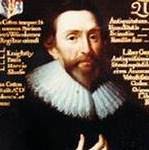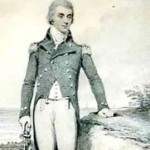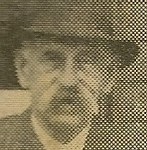Lords of the Manor of Glatton and Holme to 1611
Baldwin de Riparia ? - 1239
Little is known about the early Lords of the Manor prior to 1611. Some information can be obtained from returns to the King and those show that Baldwin de Riparia, also known as Rivers held the manor at one time until his death in 1239. He paid the King 3 palfreys, in 1218, for a licence to enclose a deer park in Holme. Although it is not known if the two palfreys he owes the King in 1221 relates to this. The King directed the Sherriff of Huntingdon not to pursue Baldwin for this debt. He was also involved in a court case with the Abbot of Thorney when the Abbot complained that “Baldwinus of Glatton and Hulm in the market of the same Abbot at Iaksele (Yaxley), which customs and services the same Baldwinus did not acknowledge”. The manor reverted to the King upon Baldwinus’s death.
Earls of Cornwall 1243-1300
Richard, Earl of Cornwall, was the second son of King John and at one point the one of the wealthiest men in Europe. He was King of the Germans and also went on the 6th Crusade. His son Edmund succeded him but died without any children. It was under Richard that Holme seems to have expanded and it maybe this was when the attempt to establish a town at Holme took place. The estate passed back to the King after Edmund’s death.
Duchy of Lancaster
The manor of Glatton cum Holme had passed through various tenants in chief but from the 14th century onwards it became a Royal Manor as part of the Duchy of Lancaster. The Duchy of Lancaster was the King’s own private estate and most manors held by the Duchy were used to provide the court with food and Holme would be ideally placed to do this.
For a brief period Edward IV awarded part of the estate to Elizabeth Woodville, his wife in 1475.
The Cotton Family 1611 to 1749
Born at Denton Sir Robert Cotton acquired the Glatton and Holme estate, from James I in 1611. The property remained in the Cotton family until 1749 when he sold the estate to Thomas Truman.
Sir Robert was an interesting man and was awarded the title of 1st baronet of Connington He was a great collector of historical documents, including the Lindisfarne Gospels, the British Library houses his collection today
Originally a favourite of James I he now fell out of favour with the monarchy. The King felt that he was a threat to his power because he had collected many documents relating to the law. He was framed for treason and had his library destroyed.
The Cottons continued as Lords of the Manor until 1749. Sir John Cotton was the last of the Baronets of Conington, as he only had 4 daughters, the title ceased when he died in 1752.
Two charities were set up by Sir John Cotton which benefit the village to this day. In 1730 the plight of the poor in Holme was such that he left money to be distributed to the poor at Michelmas to alleviate their distress. In 1731 he left money in his will to provide the poor with an education.
Thomas Truman 1749-1769
Thomas Truman, a prosperous London merchant, purchased the manors of Glatton cum Holme, Denton and Caldecote. Thomas Truman had made his money trading in the West Indies and had a plantation on Monserrat. He was in partnership with his sister’s husband Richard Neave who later became Governor of the Bank of England. In view of Holmewood Hall’s current connection with British Sugar the sugar trade features in its history further back than the 1950s.
William Wells 1769-1805
When Thomas Truman, died in 1769, he left his Huntingdonshire estates to his niece, Elizabeth (also known as Sussana) and her husband William Wells.
From the 17th century the Wells family were shipbuilders in Deptford, where they had made a lot of money from building ships for the East India Company and the navy. The first William lived at Chistlehurst and the family had another property in Bickley in Kent.
Vice- Admiral Thomas Wells 1805-1811
Most comments on Vice-Admiral Wells are of his being a pallbearer at the funeral of Nelson.
There is actually more to his story than that one incident. He entered the Navy aged 15 as a midshipman in an age when money or influence bought your commissions rather than ability. He became a Lieutenant in 1780, a Commander in 1781 and a Captain in 1782.
In 1781 he saw action in the American War of Independence with his ship the Swallow being chased by US privateers off Long Island where he had to scuttle his ship to avoid capture.
He then spent 1782 to 1783 in the West Indies where he fought at the Battle for Saint Kitts.
After the end of the American War of Independence he does not appear to have the command of another ship until 1790 when the wars with France started. When a war ended, many officers were retired on half pay and then re-commissioned when hostilities recommenced and this was probably when he started to spend time in Holme. He married Bridget Freemantle in 1784 and his son William was born in Holme in 1788, several other children were baptised here.
In 1797, his ship, Defence, was one of the ships involved in the mutiny at Spithead when the ordinary sailors, inspired by the French Revolution, revolted against the harsh conditions they had to endure. Thomas Wells had been put ashore by his crew, their discontent under his command continued until 1798, when 19 seamen were sentenced to death and 6 were flogged and imprisoned. Although he was replaced as Captain of the Defence at this point he was appointed captain of an even larger ship, the Glory, this took part in the blockade of the French fleet at Brest.
There was a lull in the fighting with France from 1801 t0 1804 when he appears to be without a ship again. He then rose rapidly up the chain of command finishing his career as commander in chief of the Nore guarding the Thames estuary against invasion by Napoleon.
After his father died in 1805 he inherited Bickley Hall in Kent but sold this to his younger brother John seeming to prefer Holmewood House.
He does not seem to be a particularly pleasant man, as a Captain Maxwell who was court martialled for refusing to take his ship, in his defence said that Wells was cruel and oppressive.
He died in Holmewood House in 1811 before he was able to take up his promotion to full Admiral.
Captain William Wells 1811-1826
Captain Wells inherited the estate unexpectedly after his elder brother Thomas died in 1810
William began his naval career at the age of 12, in 1790, when he served under his father as a midshipman on HMS Glory. He was promoted to Lieutenant in 1794 and spent most of his time sailing in the China Seas and around the East Indies. He came back to England in 1811 bringing “specie” worth half a million pounds.
The Holme parish registers show an entry for a baptism of Horatio Nelson, the vicar added a comment “stating lad brought by Captain W Wells”. His relationship to Captain Wells is unknown and so is a cause for much conjecture.
In 1816 he married the daughter of The Earl of Carysfort of Elton Hall, Lady Elizabeth Proby, and subsequently had 6 children.
He seems to have got involved with local politics and along with Lord Proby was very active in trying to get Parliamentary reform. In 1818 he was nominated to stand at the next election as member of the Independent Freeholders of Huntingdonshire but failed to get a seat. The newspaper report describes him as an excellent public and private character. He was also a JP at the Huntingdon Assizes.
He died in 1826, only 38 years old. The family left the village for 9 years renting the Holmewood House out. The tenants include the Heathcote family in 1834/1835 whilst they renovated Conington Castle.
Lady Elizabeth Wells
Unusually for a woman of that time, Lady Elizabeth Wells was appointed sole executor of Captain Wells estate and in his will Captain Wells states that his wife is of superior character and that he has faith she will run the estate well. She seems to have been a kind landlady as Elizabeth was quoted as an example to other landowners when she abated 10 percent of the tenants rent in 1829, 1828 and 1829 being two years of wet weather and bad harvests.
Lady Elizabeth Wells died in 1869 when the newspapers reported her as having an estate of over £100000. The importance of her relationship to the Probys is even recorded on her grave, the fact she was the wife of Captain William Wells is noted on the back of it.
William Wells 1826 - 1889
After graduating from Oxford University, in 1839, William took over the running of the estate from his mother.
He was an officer in the 1st Life Guards from 1839 to 1843 but from the 1843/44 accounts it would appear that he started to take an interest in the estate. Some old cottages were demolished and street drainage improved.
In 1847 he inherited the Redleaf estate in Kent from his great uncle, William Wells. This inheritance included a great number of art works by well -known artists of the era. He seems to have continued this family interest as he was a friend of Landseer.
In addition to all he did for the Village, like his father, he seems to have great interest in politics. In 1852 - 1857 he was a Liberal MP for Beverley in Yorkshire, and was also elected to represent Peterborough from 1868 to 1874. He was also active in promoting reform of the voting system, with Holme having its own branch of the Constitution Club with him as chairman. He was also a member of the Volunteer movement which was a forerunner of the Territorial Army.
William Wells retained a keen interest in agriculture for the rest of his life, both by promoting the use of steam in agriculture and as a council member of the Royal Agricultural Society becoming its President in 1880. His achievements also include the suppressing of the sale of adulterated manures, seeds and feeding stuffs.
William Wells wrote an article for the Journal of the Royal Agricultural Society of England so the drainage of the Mere is well documented.
William Wells’ income increased with the draining of the mere and he continued to reinvest much of that money into the village. He was remembered as a generous and kindly landlord, the Stamford Mercury reports in 1867 that he had reduced rents to his tenants when they lost their cattle because of a cattle plague, possibly rinderpest. He improved and rebuilt much of the village. He was also chairman of the Holme Benefit Society.
William Wells died in 1889 and there is a window in the church from his grateful tenants acknowledging his generosity. Unfortunately his vast expenditure on the village and the agricultural depression in the 1880s onwards meant he died leaving a large number of debts.
Lord De Ramsey 1890 -1902
Lord de Ramsey, of Ramsey Abbey bought the estate in 1890. Holmewood Hall was let during this time.
John Ashton Fielden 1902 -1942
The Holmewood Estate was purchased by John Ashton Fielden in 1902. He was immensely wealthy, his family had owned a cotton mill in Todmorden and later years had other businesses in, Manchester, Liverpool and London. The family were Unitarian and were very socially conscious. He was educated at Harrow and Cambridge and studied in Hamburg for some years.
He was an excellent squire and landlord but as a shy aloof man he was respected rather than liked. If times were hard he told his tenants to pay what they could until their situation improved.
The estate consisted of 680 acres of parkland and had 20 tenanted farms. Fielden sold the Glatton part of the estate in 1918. The estate was reputed to employ 100 people including craftsmen, keepers and other estate workers. Before the Second World War he had employed 10 household servants mainly women and boys.
Pheasant shooting was one of his main interests and he had, at one point, employed 5 gamekeepers. His passion for the sport was such that he prosecuted some boys, in 1905, for disturbing the pheasants near Holme Lode but they were found not guilty as they were actually on the road.
He also played cricket for Huntingdonshire whilst living at Lawrence Court Huntingdon prior to his move to Holme.
He was also extremely generous with his money supporting The London Hospital from 1900 onwards and also contributed to the building of the Huntingdon isolation hospital on Primrose Lane and several others. He also supported Sir Ernest Shackleton’s expedition to the South Pole.
During the First World War he supplied a hospital ship to take the wounded between France and England as well as many other causes.
During the Second World War he had wanted to give his house to be an auxiliary hospital, but as it was not suitable, he gave large sums of money to the War effort instead. He supplied two Spitfires and replaced them when they were both lost. A report on his death states that he gave over £300,000 to the War effort. He also gave over one wing of the house to some women who had been blinded when Coventry was bombed in 1940.
After his death in 1942, a newspaper column reported that “While his death cannot truly be said to leave a gap in the county, his life has been an illustration of the fact that where there is a survival of the old feudal system of the village and manor, in those places are often found the most advanced improvements and amenties”




